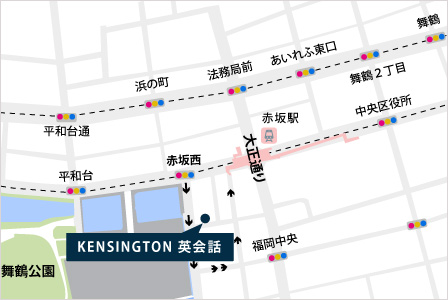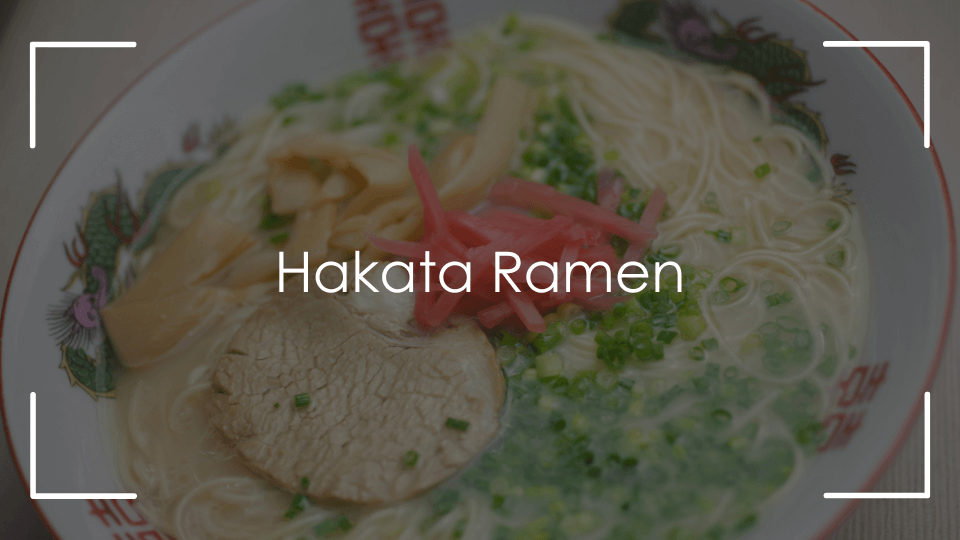
【Bartek講師】
みなさん、こんにちは!
もう2月ですね。暖かく過ごしていますか?
暖かく過ごすといえば、ラーメンを食べるのもひとつの方法ですよね。
そして、日本でラーメンを食べるならやはり博多が一番と言っても過言ではありません。
今日は、博多ラーメンを英語で紹介する方法についてお話ししましょう。
実践的な英語ならケンジントン英会話
ケンジントン英会話では、教科書には載っていない、活きた表現を身に付けることができます。
福岡市内の教室やオンラインで、経験豊富でフレンドリーな講師と一緒に英語を学びませんか?
実践的な英語を学びたい方はケンジントン英会話の公式サイトをチェック!
博多ラーメンを英語で紹介する方法
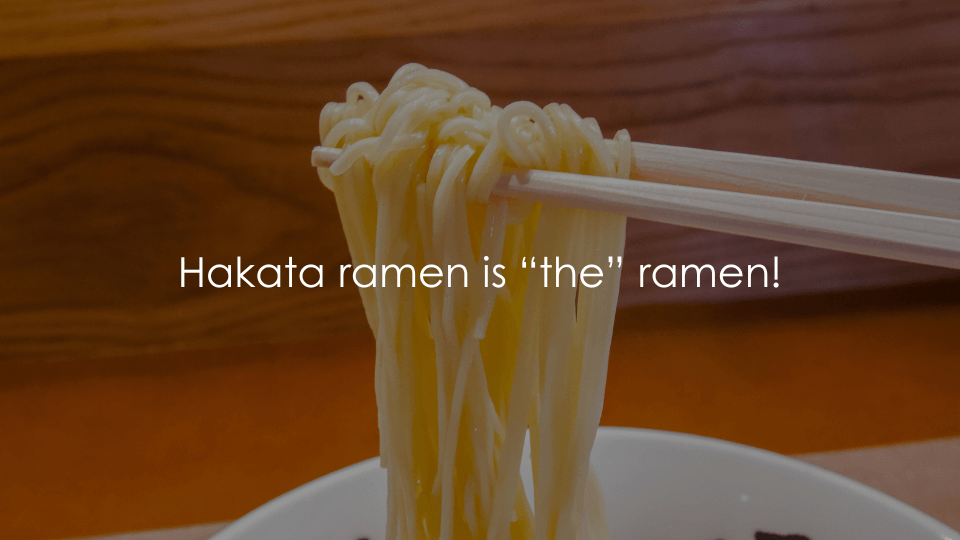
ラーメンは世界中で人気の食べ物ですよね。
なので、ラーメンについての詳しい説明は不要かもしれませんが、せっかくなので英語の練習も兼ねて説明してみましょう!
ラーメンを最もシンプルに説明すると「細い小麦の麺をスープに入れ、いくつかのトッピングを加えたもの」です。
(thin, wheat noodles served in a broth with some toppings)
でも、これだけではざっくりしすぎているので、もっと詳しく説明する方法をお伝えします。
では、どんなスープなのか説明してみましょう。
日本で最も一般的なラーメンのスープは醤油ベース (soy sauce broth)です。
これは鶏ガラスープをベースに醤油で味付けした、澄んだ茶色のスープで、最もポピュラーなラーメンの一つとされています。
(It’s considered the most common type and is typically made with a chicken broth base, seasoned with soy sauce, which results in a clear brown soup.)
一方で、博多ラーメンは豚骨スープ(pork bone broth)で提供されるのが特徴です。
豚骨を煮込んで作られ、玉ねぎ、青ネギ、背脂、生姜などを加えて仕上げます。(made from boiled pork bones, onions, spring onions, pork back fat, and ginger.)
博多ラーメンのスープは白濁した見た目をしており、その発明は偶然の産物だったと言われています。
どうやら、「杉野勝見」さんという屋台の店主が、豚骨スープを煮込みすぎてしまったところ、偶然にも見た目も味も素晴らしいスープができあがったそうです。
博多ラーメンは他の地域のラーメンと比べて、麺が細く、ストレートで、硬めなのも特徴です。(Hakata ramen noodles are thinner, straighter, and firmer.)
それもまた、博多ラーメンの起源と関係があり、この料理は当初、魚市場で働く人たちのために、素早く安く食べられるように作られました。
そのため、麺も短時間で茹でられ、すぐに食べられるようになっています。
最後に注目すべき違いはトッピングです。
一般的なラーメンには、ゆで卵、海苔、メンマやもやし、かまぼこ、肉などがトッピングされます。
それに対して、博多ラーメンはシンプルさが特徴で、通常はチャーシューと刻んだ青ネギのみがトッピングされています。
シンプルであればあるほどいい!(The simpler the better!)
ラーメンについて英語で話そう!
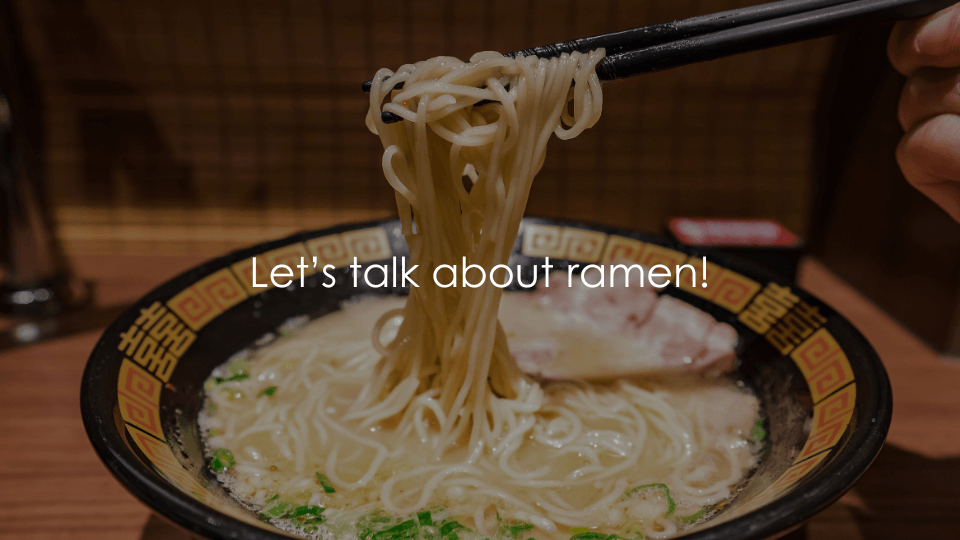
ラーメンについて語ることはたくさんありますが、実際の会話でどう活かせるでしょうか?
私のブログでおなじみのキャラクター「Pawel (P)」と「Taro (T)」の会話を見てみましょう。
(T) Hey, Pawel, do you know ramen?
(ねえ、パウェル、ラーメンって知ってる?)
(P) Of course, I do! I eat ramen Cup Noodle ramen sometimes!
(もちろん知ってるよ! たまにカップヌードルを食べるよ!)
(T) Nice! Have you ever had Hakata ramen?
(いいね! じゃあ、博多ラーメンを食べたことある?)
(P) Hmm, I’m not sure… Is that a kind of ramen?
(うーん…それってラーメンの一種?)
(T) Yes! It’s a super yummy ramen from Hakata in Kyushu!
(そうだよ! 九州の博多発祥のめちゃくちゃ美味しいラーメンなんだ!)
(P) What do you mean? How is it different from Cup Noodle or any other ramen?
(どういうこと? カップヌードルや他のラーメンと何が違うの?)
(T) Well, what is usually different between kinds of ramen is the broth flavor. What’s your favorite Cup Noodle flavor?
(まあ、ラーメンの種類ごとに違うのは、主にスープの味なんだよ。カップヌードルではどの味が好き?)
(P) I really like chicken broth with soy sauce.
(醤油ベースのチキンスープが好きかな。)
(T) Oh, that’s yummy, too. Hakata ramen though is made with tonkotsu broth or pork bone broth in English. It’s usually quite rich and salty. Hakata ramen noodles are also quite different. They are thinner, firmer, and straighter than other types of ramen noodles and…
(それも美味しいよね。でも、博多ラーメンは「豚骨スープ」なんだ。英語では「pork bone broth」って言うよ。すごくコクがあって、ちょっと塩気が強いのが特徴。そして、博多ラーメンの麺も違うんだよ。他のラーメンよりももっと細くて、硬めで、ストレートなんだ!)
(P) You are making me hungry! Is there any Hakata ramen restaurant near here so we can actually try it?
(なんだかお腹が空いてきた! この近くに実際に食べられる博多ラーメンのお店はありますか? )
私とラーメン
信じられないかもしれませんが、私は日本に長く住んでいるにもかかわらず、ラーメンを本格的に楽しみ始めたのは2020年のパンデミックの時でした。
私は博多に住んでいますが、その時期、街はまるでゴーストタウンのようになりました。
しかし、そんな中でも営業を続け、美味しいラーメンを提供し続ける店がありました。
そのひとつが「一双」です。
「一双」は博多ラーメンの中でもかなり人気のあるお店ですが、私は2020年以前は意図的に避けていました。
なぜなら、店の前にはいつも長蛇の列ができていたからです。(私は行列が大嫌いなんです!)
しかし、ゴーストタウンのようになった博多では、店内はかなり空いていて、とても入りやすい雰囲気になっていました!
誤解しないでくださいね。パンデミックはまったく楽しいものではありませんでした。
でも、もしあの状況がなかったら、私はおそらく一生「一双」に足を踏み入れることはなかったでしょう。
そして、実際に行ってみたら…それは本当に素晴らしい体験でした!
今まで食べた中で最高の博多ラーメンかもしれません。
濃厚でクリーミーなスープがたっぷり入った大きなラーメンどんぶりに、たっぷりの美味しい麺。そして、柔らかくてジューシーなチャーシューが乗っていました。
もうひとつ忘れられないラーメンの思い出は、トマトラーメンを食べたことです。
私はポーランド出身ですが、ポーランドではトマトスープが非常に人気のあるスープのひとつです。
博多には「333」というお店があり、トマトベースのラーメンを提供しています。
これを「博多ラーメン」と呼んでいいのかは議論が分かれるかもしれませんが、麺は細く、ストレートでコシがあり、トマトスープがとにかく美味しい!
素晴らしい組み合わせです!
ラーメン部門での最後の思い出は、私の故郷・シュチェチンで食べたラーメンです。
日本食はポーランドでもとても人気があり、ラーメンをはじめとする日本食レストランがたくさんあります。
私がシュチェチンで訪れたお店は、最初は存在に気づかないほどでしたが、最終的には特別な存在になりました。(店には派手なネオンがあったのですが、昼間はあまり目立たなかったんです。)
[昼]
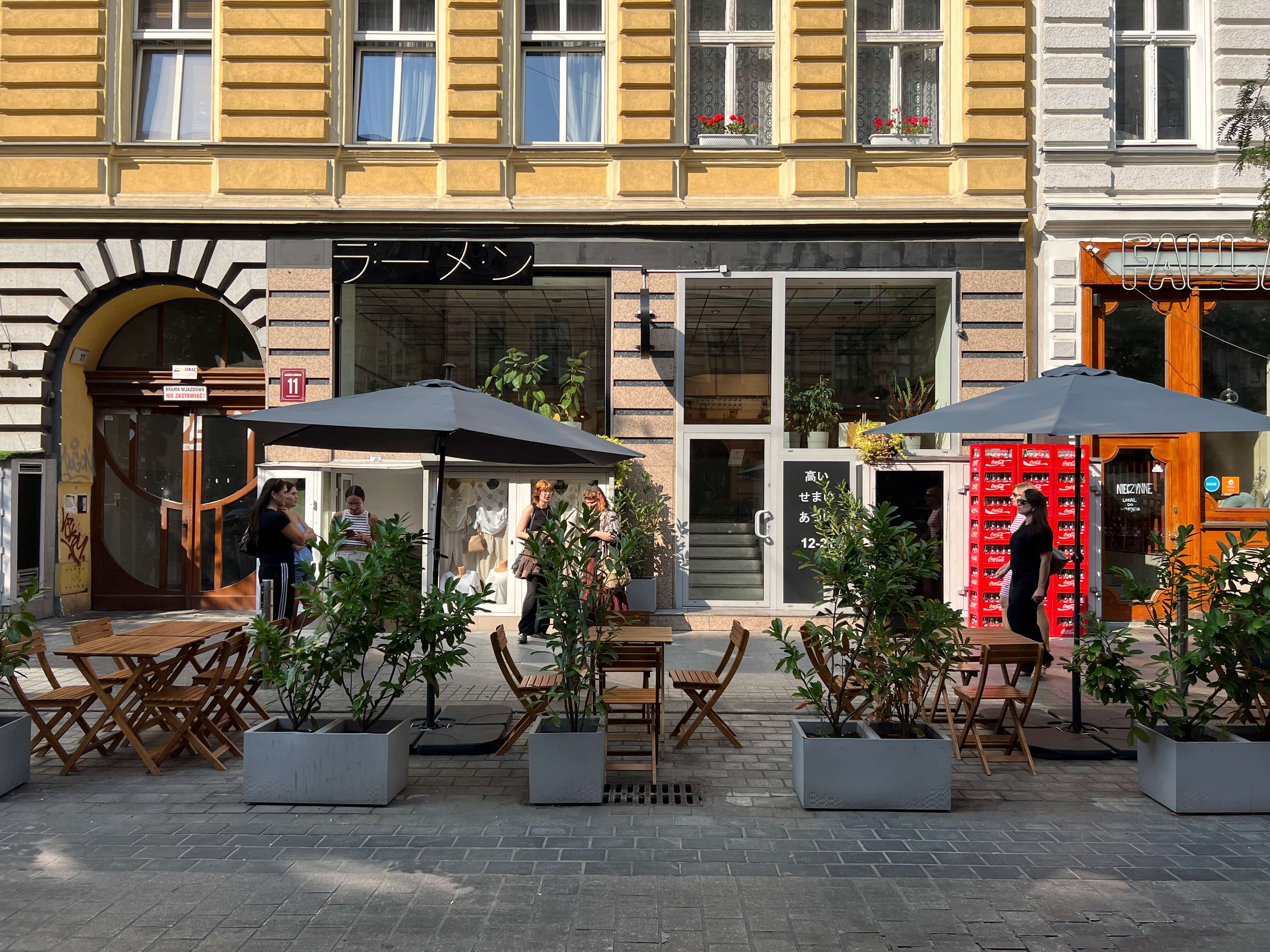
[夜]
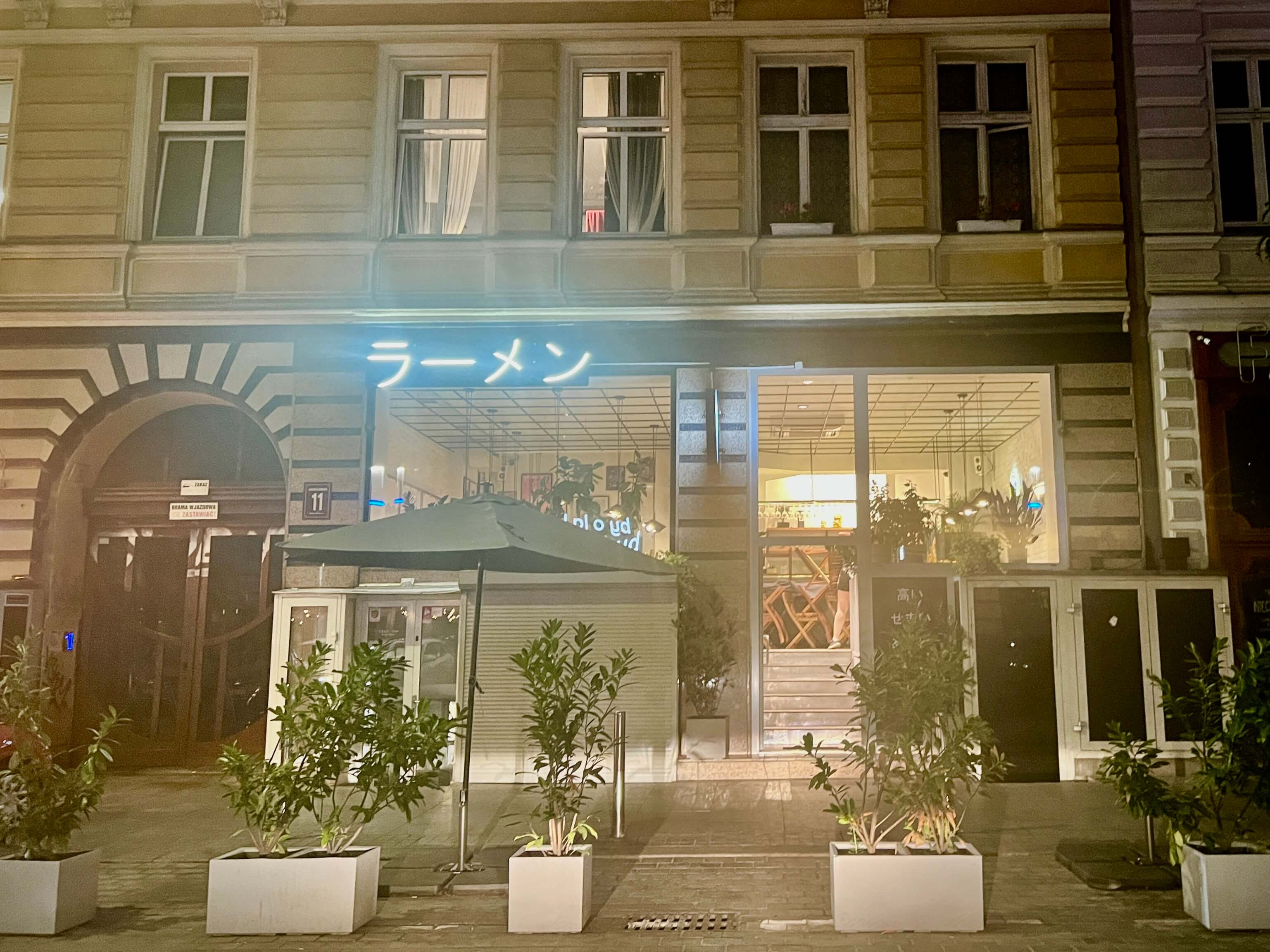
店の前には日本語で何か書かれているのを見つけました。
そこには「高い、せまい、あつい」と書かれていました。
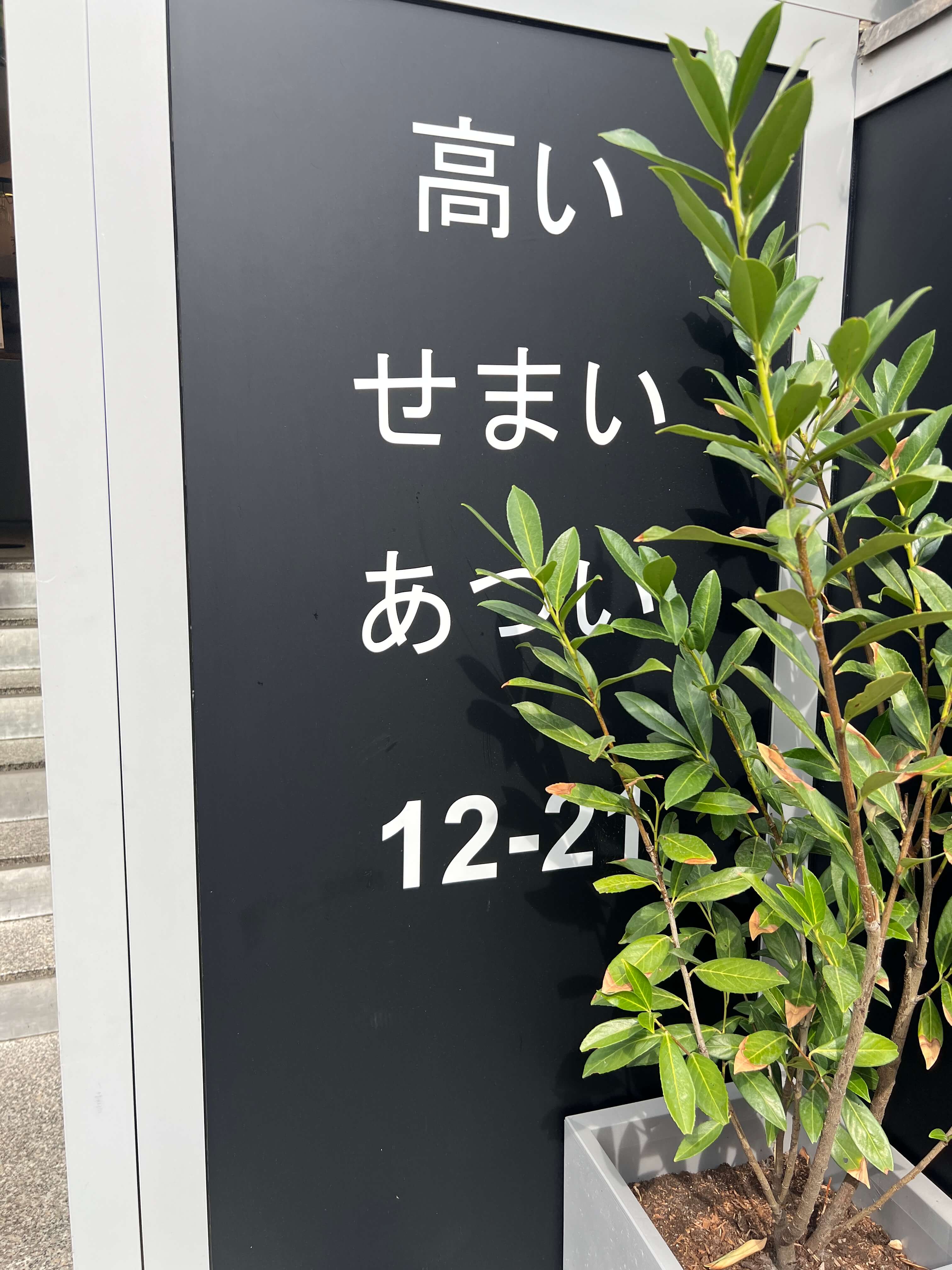
「これは冗談だよね?」と思いながら店に入ってみたら、やはり冗談でした!
ラーメンはとても美味しく、店内はそんなに暑くもなく、お財布に優しいお店でした!
まとめ
ラーメンは世界的に有名な日本食の一つであり、博多ラーメンはそのその最高峰の一つと言えるでしょう。
そのシンプルな具材と濃厚なスープが多くの人に愛され、福岡は「日本のラーメンの首都 (Ramen capital of Japan)」とさえ呼ばれています。
あなたはどれくらいの頻度でラーメンを食べますか?(How often do you have ramen?)
お気に入りのラーメン屋はどこですか? (What are your favorite restaurants?)
ぜひ教えてください! ではまた次回!
この記事を書いた人

ケンジントン英会話講師:Bartek
みなさん、こんにちは。
私の名前は、バルトシュ ヴィシンスキーです。
私はずっと昔にポーランドで生まれ、2002年に日本にやって来ました。日本には2年間滞在する予定でしたが、考えを変え、今に至ります。福岡には2015年から住んでいて、2019年から英語を教えています。
福岡は自然に無理なくアクセスでき、よく整備された日本で一番住みやすい場所だと思います。それに私の故郷、シュチェチンに似た雰囲気があるのもさらに良いところです。
時間がある時は、サイクリングや写真やビデオ撮影など、自然の中で楽しむのが好きです。
スポーツではバスケットボールとサッカーが好きです(順番はこの通りではないかもしれません)。
日本食が好きなので、日本に住んで、毎日食べられるということをフル活用しています。
みなさんにすぐに会えるのを楽しみにしています!
実践的な英語ならケンジントン英会話
ケンジントン英会話では、教科書には載っていない、活きた表現を身に付けることができます。
福岡市内の教室やオンラインで、経験豊富でフレンドリーな講師と一緒に英語を学びませんか?
実践的な英語を学びたい方はケンジントン英会話の公式サイトをチェック!
[英語原文]
Hakata Ramen
Hey, everyone! It’s already February and I hope you are staying warm. Speaking of staying warm, one way to do that is by eating ramen. Arguably, there’s no better place to eat ramen in Japan than Hakata so today we will talk about ramen in general and Hakata ramen in particular.
Hakata ramen is “the” ramen!
Ramen seems to be quite popular all around the world and although it may not be absolutely necessary to describe the basics of ramen we will try — just to practice English! The simplest description would be that ramen is “thin, wheat noodles served in a broth with some toppings.” It’s so general that I bet you already want to add some details.
So, what broth is usually used? Well, the most popular ramen broth in Japan is soy sauce broth. It’s considered the most common type and is typically made with a chicken broth base, seasoned with soy sauce, which results in a clear brown soup. In comparison, a typical Hakata ramen is served with a pork bone broth – made from boiled pork bones, onions, spring onions, pork back fat, and ginger. The Hakata ramen broth has a milky appearance and it is said that its invention was quite accidental. Apparently, a food stall owner named Katsumi Sugino pretty much overcooked his pork bone broth but the resulting soup looked and tasted amazing.
Another difference between ramen from other regions and Hakata ramen is the noodles – Hakata ramen noodles are thinner, straighter, and firmer. That, too, has to do with the origins of Hakata ramen as the dish was initially intended to be a quick and affordable meal for fish market workers and the noodles needed to cook quickly and be eaten quickly.
The last notable difference is the toppings. Ramen from other regions can be topped with boiled eggs, seaweed, bamboo or bean sprouts, fish cakes, or various kinds of meat. Hakata ramen, on the contrary, is known for its simplicity and usually comes only with roasted pork called chashu, and chopped green onions. The simpler the better!
Let’s talk about ramen!
So, there’s so much to talk about! How can we use some of that information in a real-world situation? Let’s imagine a conversation between our familiar characters – Pawel (P) and Taro (T).
(T) Hey, Pawel, do you know ramen?
(P) Of course, I do! I eat ramen Cup Noodle ramen sometimes!
(T) Nice! Have you ever had Hakata ramen?
(P) Hmm, I’m not sure… Is that a kind of ramen?
(T) Yes! It’s a super yummy ramen from Hakata in Kyushu!
(P) What do you mean? How is it different from Cup Noodle or any other ramen?
(T) Well, what is usually different between kinds of ramen is the broth flavor. What’s your favorite Cup Noodle flavor?
(P) I really like chicken broth with soy sauce.
(T) Oh, that’s yummy, too. Hakata ramen though is made with tonkotsu broth or pork bone broth in English. It’s usually quite rich and salty. Hakata ramen noodles are also quite different. They are thinner, firmer, and straighter than other types of ramen noodles and…
(P) You are making me hungry! Is there any Hakata ramen restaurant near here so we can actually try it?
Ramen and me 
Believe it or not, even though I’ve lived in Japan for a long time I’ve only started enjoying ramen during the pandemic in 2020. I live in Hakata and as it became a sort of a ghost town then there were still ramen shops that were open and offering their best meals. One of them was Isso – a quite popular Hakata ramen restaurant that I’d carefully avoided before 2020 because of the usual long queues in front of it (I hate queues!). In the ghost town though the restaurant was pretty empty and that was really welcoming to me! Don’t get me wrong, the pandemic wasn’t fun at all but without it, I’d probably never venture into Isso, and what a great experience that was! Probably the best Hakata ramen I’ve ever had – a big bowl of thick, creamy soup and a very generous amount of amazing noodles. Not to mention really tender chashu on top.
Another great “ramen memory” was eating tomato ramen. As you know, I come from Poland, and one of the most popular soups in my country is tomato soup. There comes the restaurant called “333”, serving ramen with tomato-based soup. One may dispute if that’s really Hakata ramen but the noodles are thin, straight, and firm and the tomato soup is just delicious! A fantastic combination!
One last memory from the ramen department is eating ramen in my hometown – Szczecin. Japanese food is very popular in Poland and there are quite many Japanese restaurants, including ramen. The one in Szczecin was a bit special for me as I didn’t notice it at first (the restaurant has a flashy neon but it’s not very visible in the daytime). What I did notice was some writing in Japanese in front of it. It said “高い、せまい、あつい”. Wondering whether that was sarcasm I ventured in and yes, it was sarcasm – ramen was great, it wasn’t too hot inside and it didn’t ruin my finances!
Conclusion
Ramen may be considered one of the most famous Japanese foods and Hakata ramen is likely its best variation. The rich taste and simple ingredients made it so popular that Fukuoka is rightfully called the “Ramen capital of Japan”. How often do you have ramen? What are your favorite restaurants? Let us know, and as always – take care and until the next time!
~*~*~*~ \ Follow me / ~*~*~*~
Instagram : @kensington_eikaiwa
Twitter : @Kensington_Eng
Facebook : @kensingtoneikaiwa
YouTube : KENSINGTON英会話
~*~*~*~*~*~*~*~*~*~*~*~*~*
◆体験レッスン申し込みはこちら
ケンジントン英会話:体験レッスン申し込みフォーム







































































